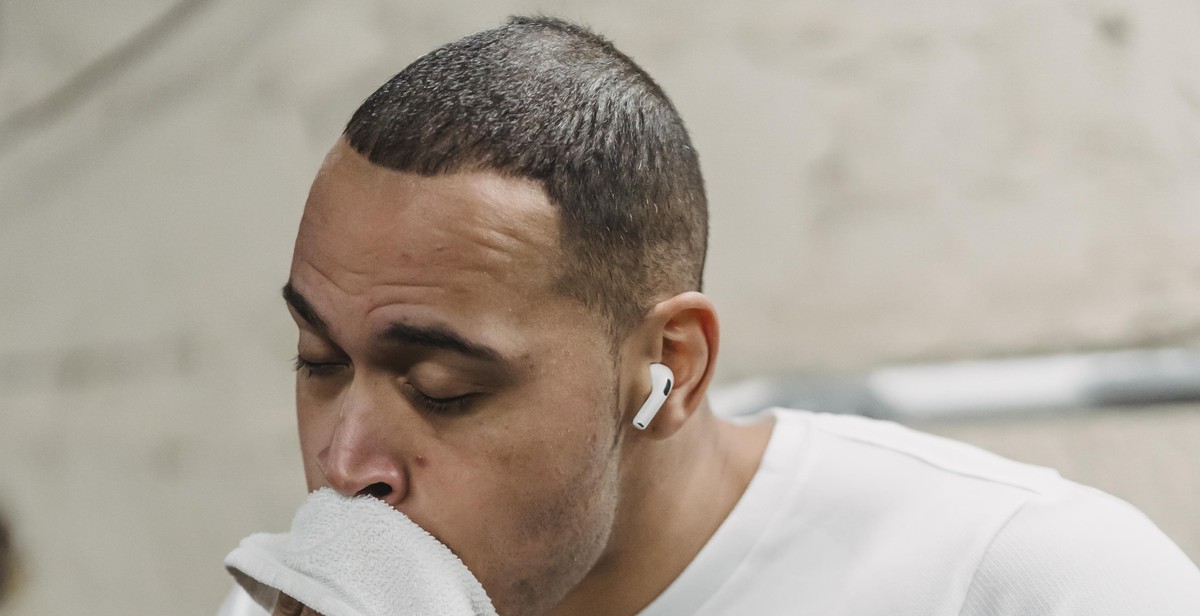Understanding the Impact of Body Language in Communication
Communication is an essential part of our daily lives. We communicate with our family, friends, colleagues, and even strangers. However, communication is not just about the words we speak; it’s also about the way we present ourselves through our body language.
Body language refers to the nonverbal signals that we use to communicate with others. These signals include facial expressions, gestures, posture, eye contact, and tone of voice. Research shows that body language can convey up to 93% of our communication, making it a critical aspect of effective communication.
The Importance of Body Language in Communication
Body language can either enhance or hinder our ability to communicate effectively. Our body language can convey a range of emotions, from confidence and openness to nervousness and discomfort. Understanding body language can help us to better interpret the messages that others are sending and to convey our own messages more effectively.
In this article, we will explore the impact of body language in communication, including the different types of body language, how to interpret body language, and how to use body language to improve communication.

What is Body Language?
Body language is a form of nonverbal communication that involves the use of physical movements, gestures, facial expressions, and postures to convey messages to others. It is a powerful tool that can reveal a person’s thoughts, feelings, and intentions, often without them even realizing it.
Types of Body Language
There are several types of body language that people use to communicate with others. These include:
- Facial expressions: The face is one of the most expressive parts of the body and can reveal a lot about a person’s emotions. For example, a smile can indicate happiness or friendliness, while a frown can indicate sadness or disapproval.
- Gestures: Gestures are movements of the hands or arms that can also convey meaning. For example, waving can indicate hello or goodbye, while pointing can indicate direction or emphasis.
- Posture: Posture refers to the way a person holds their body. It can indicate confidence, shyness, or even aggression. For example, standing up straight with shoulders back can indicate confidence, while slouching can indicate shyness or insecurity.
- Eye contact: Eye contact is a powerful form of nonverbal communication that can indicate interest, attention, or even attraction. Maintaining eye contact can show that you are engaged in a conversation, while avoiding eye contact can indicate discomfort or dishonesty.
- Tone of voice: While not strictly a form of body language, the tone of voice can also convey meaning. For example, a loud, aggressive tone can indicate anger or frustration, while a soft, gentle tone can indicate kindness or affection.
By understanding the different types of body language and what they mean, you can become more skilled at interpreting the messages that others are sending you, as well as controlling the messages that you send to others.
| Type | Description |
|---|---|
| Facial expressions | The use of the face to convey emotions or attitudes |
| Gestures | Movements of the hands or arms that convey meaning |
| Posture | The way a person holds their body, which can indicate emotions or attitudes |
| Eye contact | The use of the eyes to convey interest, attention, or attraction |
| Tone of voice | The use of the voice to convey emotions or attitudes |

The Importance of Body Language in Communication
Communication is the key to any successful relationship, be it personal or professional. While words are the primary mode of communication, non-verbal cues such as body language play a crucial role in conveying our thoughts and emotions effectively. In fact, studies have shown that body language accounts for over 55% of communication, while words and tone of voice make up the remaining 45%.
Non-Verbal Communication
Non-verbal communication includes all the messages we convey through our body language, facial expressions, gestures, posture, and even the way we dress. It is a powerful tool that can either enhance or detract from the message we are trying to convey.
For instance, crossing your arms over your chest may indicate defensiveness or discomfort, while maintaining eye contact and an open posture can convey confidence and trustworthiness. Similarly, a genuine smile can convey warmth and friendliness, while a forced smile may come across as insincere or fake.
The Role of Body Language in Building Relationships
Body language plays a vital role in building and maintaining relationships. In fact, it is often said that actions speak louder than words, and this is true when it comes to relationships. Our body language can either reinforce or contradict the words we are saying, and this can have a significant impact on how others perceive us.
For instance, if you are in a romantic relationship and your partner constantly avoids eye contact, crosses their arms, or turns away from you, it may indicate that they are not interested or that they are hiding something. On the other hand, if they maintain eye contact, lean towards you, and touch you affectionately, it may indicate that they are genuinely interested and invested in the relationship.
Similarly, in a professional setting, your body language can convey your level of confidence, competence, and authority. Maintaining eye contact, standing up straight, and using appropriate gestures can help you establish credibility and build trust with your colleagues and clients.
Ultimately, understanding and mastering body language is essential for effective communication, building strong relationships, and achieving success in both personal and professional spheres.

How to Read Body Language
Body language is a crucial aspect of communication that can often convey more information than words alone. Understanding how to read body language can help you to better understand the emotions and intentions of the person you are communicating with. Here are three key elements of body language to pay attention to:
Facial Expressions
Facial expressions can be very telling of a person’s emotions. For example, a smile can indicate happiness or friendliness, while a furrowed brow may indicate confusion or concern. It’s important to pay attention to the subtleties of facial expressions, as even small changes in the eyebrows, mouth, or eyes can convey different meanings.
Gestures and Posture
Gestures and posture can also be indicative of a person’s emotions and intentions. For example, crossed arms or a defensive posture may indicate defensiveness or discomfort, while open gestures and an upright posture may indicate confidence or interest. Similarly, fidgeting or tapping may indicate nervousness or impatience.
Eye Contact
Eye contact is another important element of body language. Maintaining eye contact can indicate confidence, honesty, and interest, while avoiding eye contact may indicate shyness, discomfort, or dishonesty. However, it’s important to note that cultural differences may impact the significance of eye contact, and some people may be uncomfortable with prolonged eye contact.
Overall, understanding how to read body language can help you to better understand the emotions and intentions of the person you are communicating with. By paying attention to facial expressions, gestures and posture, and eye contact, you can gain valuable insights into the meaning behind their words.

Common Body Language Mistakes to Avoid
Body language is an important aspect of communication that can greatly impact how we are perceived by others. However, there are common mistakes that can undermine the effectiveness of our nonverbal cues.
Fidgeting or Restlessness
Restlessness or fidgeting can convey nervousness, lack of confidence, or disinterest in the conversation. It can also be distracting to the person you are speaking with. To avoid this mistake, try to maintain a relaxed and comfortable posture. Take deep breaths and focus on your breathing to calm your nerves. If you are sitting, keep your feet planted firmly on the ground and avoid tapping them or swinging them back and forth. If you are standing, distribute your weight evenly and avoid shifting your weight from foot to foot.
Crossed Arms or Legs
Crossing your arms or legs can create a barrier between you and the person you are speaking with. It can convey defensiveness, insecurity, or disagreement. To avoid this mistake, keep your arms and legs uncrossed and open. This posture conveys openness, confidence, and receptiveness to the conversation.
Avoiding Eye Contact
Avoiding eye contact can convey dishonesty, disinterest, or lack of confidence. It can also make the person you are speaking with feel uncomfortable or unimportant. To avoid this mistake, maintain eye contact for a few seconds before looking away briefly. This conveys attentiveness, confidence, and respect for the person you are speaking with. Additionally, nodding your head and smiling can show that you are actively listening and engaged in the conversation.
By avoiding these common body language mistakes, you can convey confidence, openness, and receptiveness in your communication. These nonverbal cues can greatly enhance the effectiveness of your message and help you build stronger relationships with the people around you.

Using Body Language to Improve Communication
Body language plays a significant role in communication. It can convey emotions, attitudes, and intentions that words alone cannot express. Understanding body language and using it effectively can help you communicate more clearly and build stronger relationships.
Matching Body Language
Matching body language is a powerful tool for building rapport with others. When you match someone’s body language, you are subtly signaling that you are on the same wavelength. This can help put the other person at ease and create a more harmonious conversation. Matching body language can include things like mirroring their posture, gestures, and even facial expressions.
Mirroring Body Language
Mirroring body language takes matching to the next level. When you mirror someone’s body language, you are not just copying their movements, but you are doing so in sync with them. This can help create a deeper sense of connection and understanding. Mirroring body language can be particularly useful in negotiations or when trying to build trust with someone.
Using Body Language to Show Interest
Using body language to show interest is a great way to communicate your engagement and enthusiasm. This can include things like leaning forward, making eye contact, and nodding your head. These signals can help convey that you are actively listening and interested in what the other person is saying. Conversely, crossing your arms or avoiding eye contact can signal disinterest or defensiveness.
| Positive Body Language | Negative Body Language |
|---|---|
| Smiling | Frowning |
| Open posture | Closed posture |
| Eye contact | Avoiding eye contact |
| Nodding | Shaking head |
By paying attention to your own body language and the body language of others, you can improve your communication skills and build stronger relationships.
